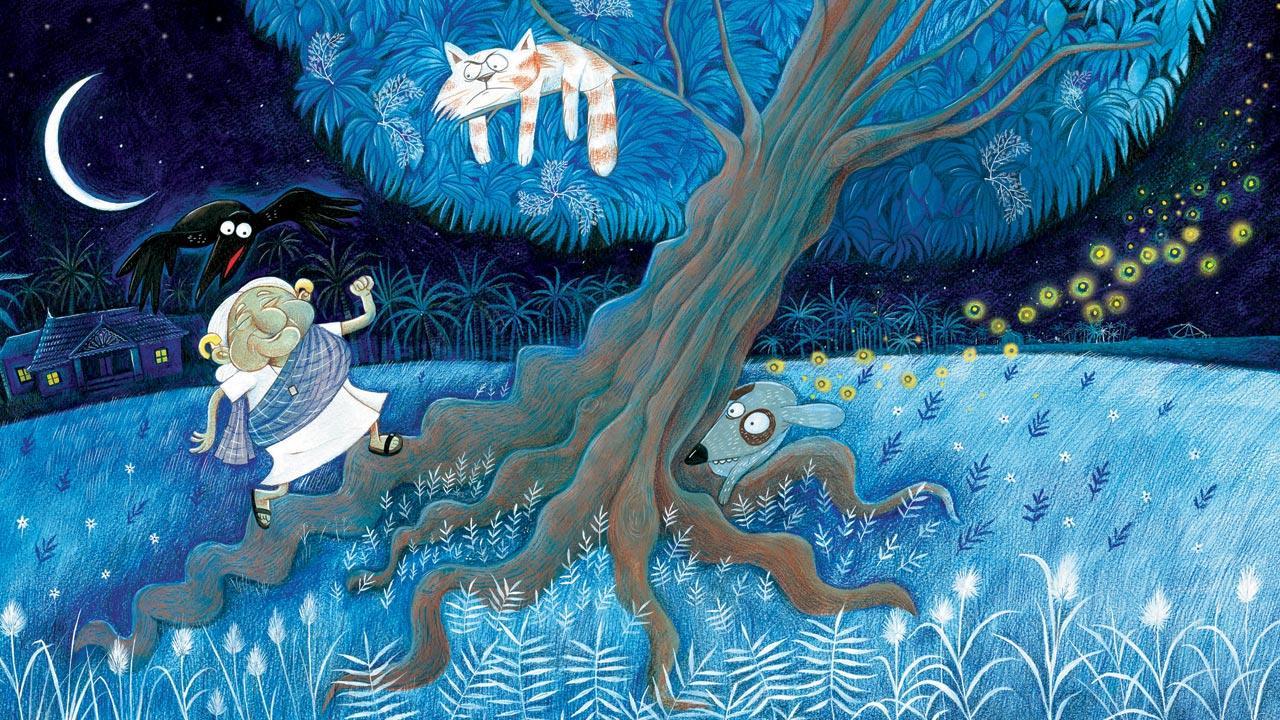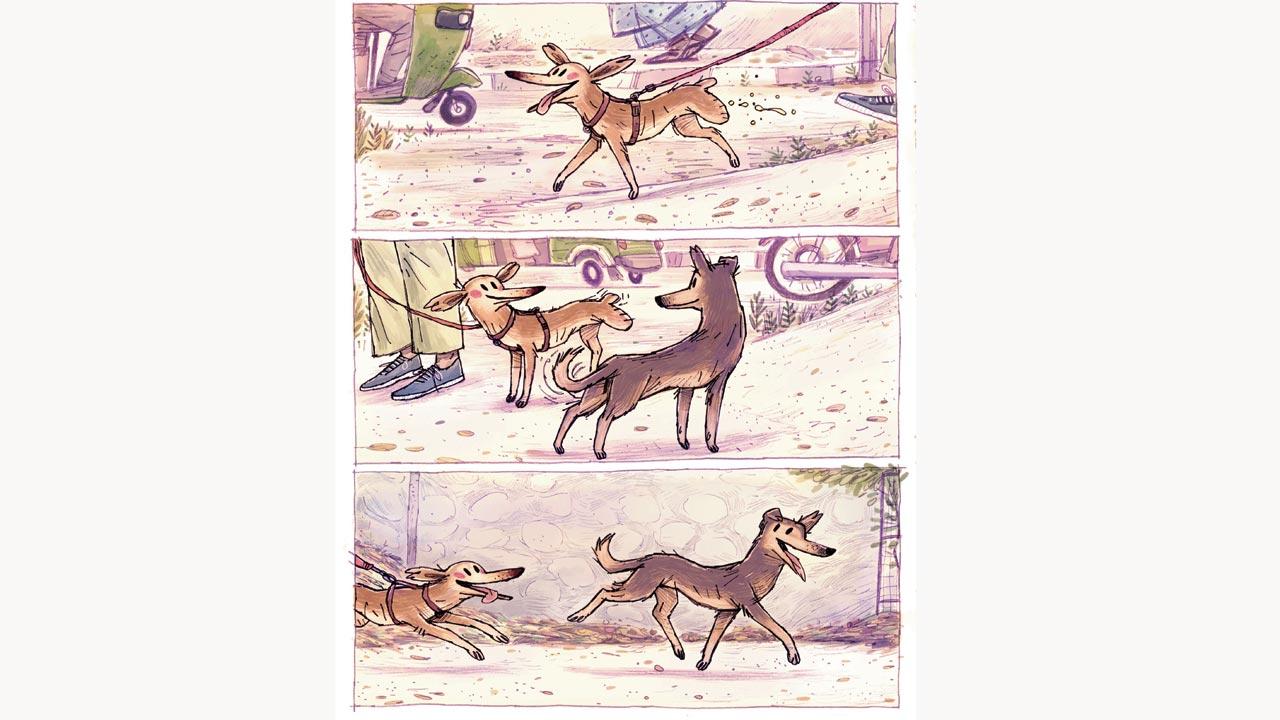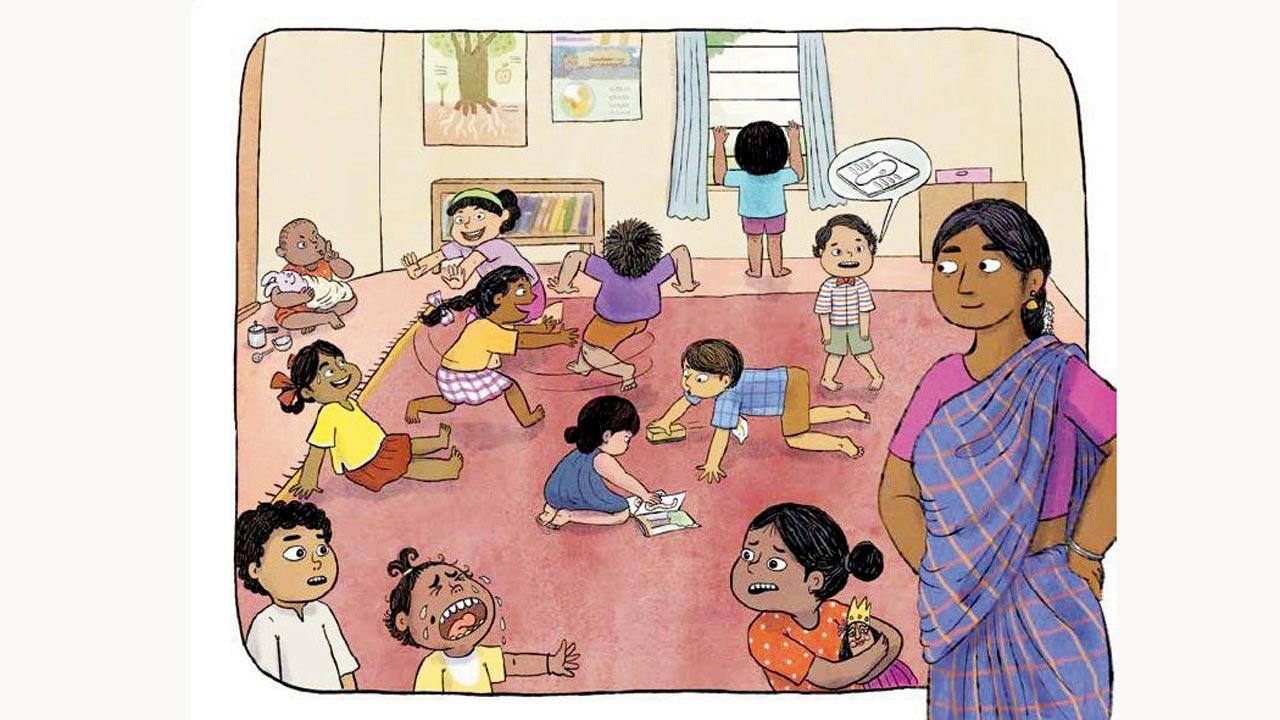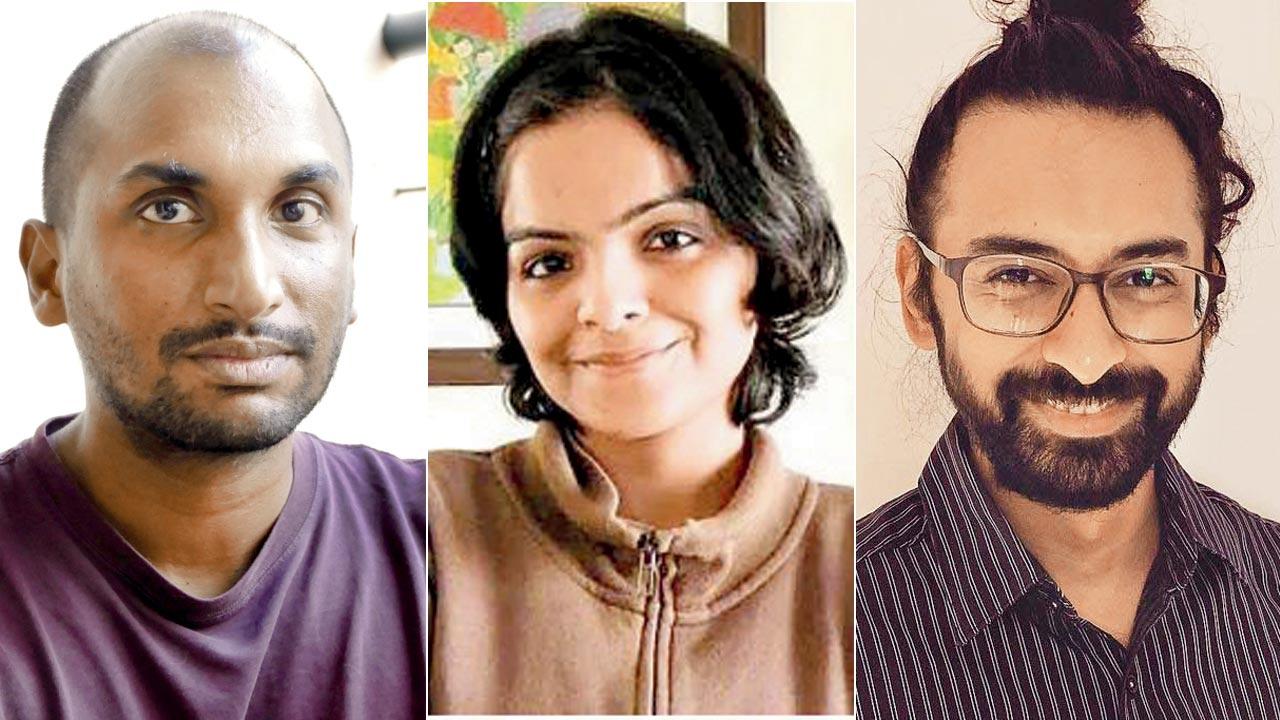As the year raps up, illustrators study the seamlessness of wordless picture books, 2022’s big trend

A page from Ammachi’s Glasses by Priya Kuriyan. Pics Courtesy/Tulika Books, Pratham Books
It was shades of blue on yellow. Little Goat — a character our then four-year-old cousin was staring at on a winter afternoon — stood against an ochre wall. They were ready for school — with a pencil, paper and a headful of butterflies in tow. Our cousin exclaimed something’s wrong. We looked closer and found Little Goat, like us, didn’t want to return to a city they can’t call home. “They’re too shy to give that piece of paper to their best friend,” our tiny brother shared. Both of us were trying to relate to Little Goat’s right toe uneasily hinged against their left one. We interpreted a familiar body posture in a language free of words. And free of singularity, too.
 A page from Dugga by Rajiv Eipe
A page from Dugga by Rajiv Eipe
The above frame from A Friend for Little Goat by writer Sudeshna Shome Ghosh and illustrator Aratrika Choudhury proceeds to communicate through words and phrases. But the book had us at that clingy toe! In that light, Indian author-illustrators point us towards the growing scope of picture-only books and their universal dialect.
At your own pace
Animator and illustrator Rajiv Eipe who recently came out with his book, Dugga — a silent story about empathy for street animals, feels pictures let kids read at a pace they are comfortable with. “In a world that’s concerned about deciphering, pictures create a space for little learners to slow down and comprehend on their own,” he says. “There’s also the obvious joy in reading independently. It’s something that can be accessed by one and all. As these books develop the concept of visual literacy, they allow the reader to lounge in the images and work a bit to piece the story together,” Eipe added.
Book picks: A Visit to the City Market by Manjula Padmanabhan, Ikru’s First Day of School by Sunaina Coelho, Ammachi’s Glasses by Priya Kuriyan and The Arrival by Shaun Tan.
 A page from Ikru’s First Day of School by Sunaina Coelho
A page from Ikru’s First Day of School by Sunaina Coelho
A vocabulary of one’s own
“When children look at wordless picture books, they pick a vocabulary through shared communication,” notes Priya Kuriyan, the author-illustrator of Ammachi’s Glasses, which set a benchmark for Indian word-free books soon after its release in 2017. “Apart from the self-interpretation, these books can be read out by parents, a nanny or grandparents who speak a different language. So, kids learn a variety of words and also connect them to real-life silent gestures,” she explains, adding that such texts spur wilder imagination as there’s no clear-cut end. Children can weave their own side story at any point. Wordless picture books emerged late in India despite a rich past of folk art supplemented by oral storytelling. Kuriyan reasons that could be because parents attach more value to words as without them, the evidence of learning seems to be missing.
Book picks: Flotsam by David Weisner, This is Where We Live by Manjari Chakravarti, The Wanderer by Peter Van Den Ende, Footpath Flowers by JonArno Lawson and Dugga by Rajiv Eipe.

Pictures harness power
Drawing without the bolster of words is quite difficult. Harshad Marathe, known for his illustrations in All of Me and Muezza and Baby Jaan believes India’s diverse class and cultural symbols aren’t easy to navigate through pictures alone. “There’s a reader in an international school. There’s also a reader who can’t avail formal education. Speaking to both of them through identifiable pictorial prompts is a challenge. Pictures, if told the right way, harness that power.”
Book picks: Avoid This by Brian Rea, Ikru’s First Day of School by Sunaina Coelho, This Is Not My Hat by Jon Klassen and The Fate of Fausto by Oliver Jeffers.
 Subscribe today by clicking the link and stay updated with the latest news!" Click here!
Subscribe today by clicking the link and stay updated with the latest news!" Click here!








